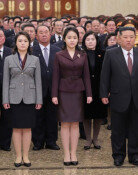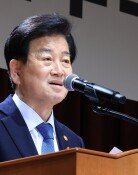High-speed internet shows digital divide
High-speed internet shows digital divide
Posted October. 02, 2000 12:01,
The digital divide has been increasing in the light of the fact that the 3.5 times the number of Seoul residents have subscribed to high-speed internet services in comparison to other regions such as South Gyeonggi, Chungnam, North Gyeonggi, North Jolla, a recent study revealed.
The fact came to light Sunday from a compilation and analysis by regions of the information sent to Rep. Kim Hyo-Seuk, a member on the National Assembly's Science, Technology, Information and Communication Committee, by the high-speed internet connection providers, Dacom, Hanaro and Thrunet, among others.
According to the information, as of Sept. 8, the high-speed internet subscription rate (number of subscribers divided by the population data gathered in February, by region) was determined to be 7.51%, which is 3.5 times higher than the lowest subscription rate in South Gyeonggi Province (2.12%).
By city, the high-speed subscription rates were Incheon at 7.15%, Busan with 6.40%, Daegu 6.33%, Gwangju 6.03%, Daejeon 5.69% and Ulsan 4.41%, revealing that the subscription rates in major cities within regions were relatively higher.
On the other hand, by region, although the Gyeonggi region, which surrounds the city of Seoul had a relatively higher subscription rate of 4.24%, other regions had lower rates, usually below 3% -- South Chungnam 2.13%, North Gyeonggi 2.18%, North Jolla 2.19%, South Jolla 2.46%, Gangwon 2.71%, and Jeju 2.77%.
The average high-speed internet subscription rate for cities was 6.26%, which is twice the national average of 3.06%.
The digital divide also has been widening by age group. The comparison of internet usage as of May last year and this year revealed an increase in usage from 26.8% to 60.0% for those in their 20s. However, for those in their 50s, the so-called analogue generation, internet usage increased from 2.9% to only 4.9%, still under 10%.
For those considered to be in the high-income bracket of more than 4 million won per month, the subscription rate increased from 34.1% to 53.4%. On the other hand, for those with incomes below 1 million won per month, the subscription rate increased three-fold from 8.3%, but still remained at 24.5%.
For college graduates internet usage jumped from 31.3% to 62.4%, while people with only middle school diplomas showed subscription rates going from 0.4% to 1.9%.
"Although the government has been actively providing low-cost internet PC's to the general public, without the problems in the infrastructure of the high-speed internet cable networks worked out, the digital divide will not be narrowed," Rep. Kim Hyo-Seuk said. "The information availability and acquisition might become monopolized by a small segment of the population and become yet another dividing line."







